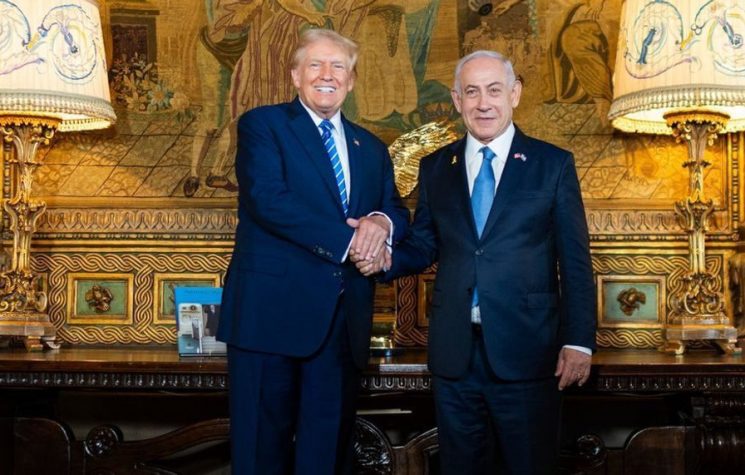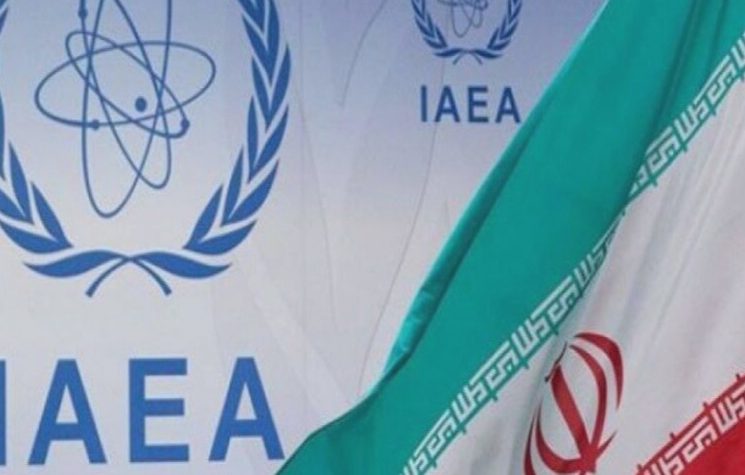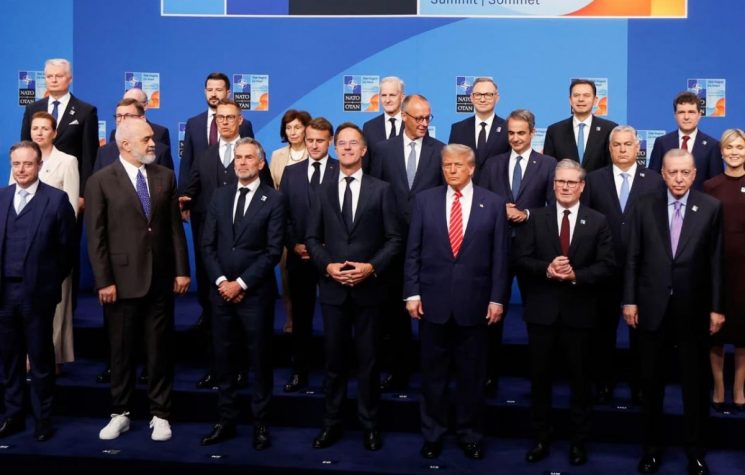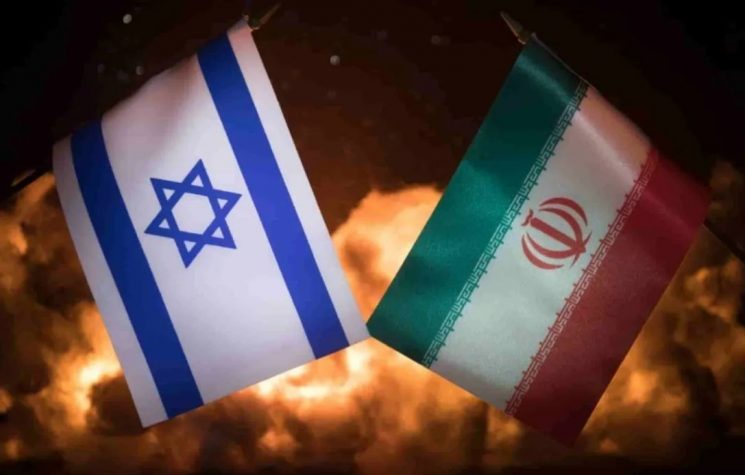The present hostage exchange is centred on Gaza. However, Israel has three fronts of hot conflict open.
❗️Join us on Telegram![]() , Twitter
, Twitter![]() , and VK
, and VK![]() .
.
Contact us: info@strategic-culture.su
The Magician steps onto the stage, his black cloak swirling about him. Centre stage, he flourishes his hat: It is empty. He punches it lightly to demonstrate its solidity. The Magician then picks up certain objects and places them into his hat. Into it goes AnsarAllah’s seizure of an Israeli-owned vessel (the situation is being ‘monitored’); into it goes the Iraqi strikes on U.S. bases (barely noticed by the main-stream media); into it too go the 1,000 missiles fired into northern Israel by Hizbullah; into it goes the hot war in the West Bank. The Magician turns to the audience – the hat is empty. But the audience knows those objects have a physical reality, but somehow they are magically obfuscated.
It is in this way that the western main-stream media maintains deterrence by playing down the state of war through what Malcom Kyeyune describes as “a simulacrum of peace” – of a gently subsiding conflict and the quieting deployment of (paraphrasing Kyeyune) a very “post-modern question”: What exactly is the meaning of civilian ‘non-combatant’ anyway?
One aspect to the image of easing conflict is the hostage exchange that has been agreed. It is both real, and at the same time it underpins the simulacrum that once Hamas is annihilated, and the hostages released, then the problem of 2.3 million Palestinians can go into the magician’s hat, and be eased from sight. For some, the hope is sincere and well intentioned – that once the fighting ceases, it will stay ceased, and that an end to the bombardment in Gaza might open a window to some political ‘solution’ – if it can be extended sine dei.
‘Solution’ being here but a polite word for the EU’s attempted bribery of Egypt and Jordan. Reportedly, the EU President, Ursula von der Leyen, visited Egypt and Israel to present them with financial offers ($10bn for Egypt and $5bn for Jordan), in exchange for the dispersal of the inhabitants of the Gaza Strip elsewhere – effectively to facilitate the evacuation of the Palestinian population from the Strip in line with Israel’s aims of ethnically-cleansing Gaza.
However, former minister Ayalet Shaked’s tweet – “After we turn Khan Yunis into a soccer field, we need to tell the countries that each of them take a quota: We need all 2 million to leave. That’s the solution to Gaza” – is but one by senior Israeli political and security figures extoling what Israel increasingly sees as the “solution” for Gaza.
But by being so explicit, Shaked likely has torpedoed Von der Leyen’s initiative – for no Arab state wants to be complicit in a new Nakba.
A Hudna or ‘time out’ inevitably is highly precarious. In the 2014 fighting, when IDF forces initiated military sweeps in Gaza after a ceasefire had begun, it led to a fire-fight and the collapse of the cease-fire. The fighting continued for another full month.
Two key lessons that I learnt from trying to initiate truces on behalf of the EU during the Second Intifada were that a ‘truce is a truce’ and only that – both sides use it to reposition themselves for the next round of fighting. And secondly, that ‘quiet’ in one confined locality does not spread de-escalation to another geographically separate locality; but rather, that one outbreak of egregious violence is virally contagious, and spreads geographically instantly.
The present hostage exchange is centred on Gaza. However, Israel has three fronts of hot conflict open (Gaza, its northern border with Lebanon, and in the West Bank). An incident occurring in any one of the three fronts may be enough to collapse confidence in the Gaza understandings and re-launch Israel’s assault on Gaza.
On the eve of the truce, by way of example, Israeli forces heavily bombed both Syria and Lebanon. Seven Hizbullah fighters were killed.
The point here, plainly said, is that the historical precedents of Hudnas leading to political openings are not that great. A hostage release, per se, resolves nothing. The issue in the present crisis runs far deeper. When, ‘once upon a time’, Britain promised the Jews a homeland, western powers also (in 1947) promised Palestinians a state, but never took it to implementation. This lacuna ultimately is culminating in a head-on train crash.
The Israeli Cabinet’s ambition for a Jewish State on the biblical lands of Israel simply is intended to block any Palestinian State from emerging either in part of Jerusalem, or elsewhere in historic Palestine. In this context, Hamas’ actions were precisely intended to break this impasse and the endless paradigm of fruitless ‘negotiations’.
Unsurprisingly, Israel’s Defence Minister already has announced Israel’s intention to renew fighting immediately after the end of the cease-fire. Israeli officials have been telling their U.S. counterparts that they anticipate several more weeks of operations in the north of the Strip, before shifting focus to the south.
Thus far, the IDF has been operating in areas close to the shoreline in Gaza, and in places, such as the Wadi, south of Gaza City, where the subsoil does not facilitate the building of tunnels. These are the areas, therefore, where Hamas does not have significant defensive capabilities. Should military action be renewed, the IDF is likely to move away from the northern coastline towards the Gaza City epicentre, allowing Hamas to manoeuvre more easily, and inflict greater losses on the IDF and their armoured vehicles. In this sense – away from the simulacra – the war is just beginning.
Prime Minister Netanyahu has been described both in Israel and in the western MSM as a ‘dead man walking’ in political terms. Be that as it may, Netanyahu has his strategy: He has openly defied the Biden Team on every war-related issue, except that of eradicating Hamas.
During a press conference last Sunday, Netanyahu touted a “diplomatic Iron Dome”, saying he would not give in to “increasingly heavy pressure … used against us in recent weeks … I reject these pressures and say to the world: We will continue to fight until victory — until we destroy Hamas and bring our hostages back home”.
Yonatan Freeman, from the Hebrew University, perceives the gambit in Netanyahu’s vague statements: He defies Team Biden, yet takes care to leave sufficient ‘wiggle room’ so that he can always blame Biden, whenever he is ‘forced’ by America into some reversal.
The Israeli Cabinet’s strategy, therefore, rests on the big bet that Israeli public opinion will hold – despite Netayahu’s personal disapproval ratings – due to the overwhelming public support at this point for the two declared objects set by the War Cabinet: Destroying the ‘Hamas regime’ and its capabilities, and the release of all Israeli hostages.
At its core, ‘the bet’ lies in the conviction that public sentiment – contextualised deliberately by the Israeli cabinet in absolute Manichean terms (light versus the dark; civilisation versus barbarism; all Gazans being complicit with ‘Hamas’ evil’) – will ultimately arouse a wave of support for the further move of taking “the fiction” of a Palestinian state off the table “once and for all”. The table is being set for a long war against ‘cosmic evil’.
The ‘solution’, as National Security Minister Smotrich and his allies underline, is to offer Palestinians a choice – ‘to renounce their national aspirations and continue living on their land in an inferior status’, or to emigrate abroad. Put bluntly, the ‘solution’ is the removal of all non-subservient Palestinians from the lands of Greater Israel.
Turning now to the contending perspective:
The ‘united axis’ supporting Palestinians observe that Israel continues to adhere to its initial military goals of destroying Gaza to the point where there is nothing left – no civilian infrastructure at all – by which Gazans might live, were they even to try to return to their collapsed homes.
They see this Israeli objective fully supported by Biden when his spokesman said:
“We believe that they have the right to [embark on further combat operations in Gaza]; but [such actions] … should include greater and enhanced protections for civilian life”.
Regional security commentator, Hasan Illaik, notes,
“Axis officials also believe that conciliatory-sounding U.S. statements, which sometimes suggest that a de-escalation phase is imminent, are nothing but an effort to repair a public image heavily damaged by unstinting U.S. support for Israel’s continuing massacre of Palestinians in Gaza”.
So, is Israel, supported by Team Biden and some EU leaders, winning?
Tom Friedman – an intimate of Team Biden – wrote in the New York Times on 9 November – after traveling around Israel and the West Bank:
“I now understand why so much has changed. It is crystal clear to me that Israel is in real danger — more danger than at any other time since its War of Independence in 1948”.
Far-fetched? Possibly not.
Back in 2012, U.S. author Michael Greer wrote that Israel was founded at a particular propitious time, despite being surrounded by hostile neighbours:
“Several of the major Western powers supported the new state with significant financial and military aid; of at least equal importance, members of the religious community responsible for creating the new state, who remained back in those same Western nations, engaged in vigorous fundraising efforts to support the new state, and equally vigorous political efforts to get existing governmental support maintained or increased. The resources thus made available to the new state gave it a substantial military edge against its hostile neighbours, and its existence became enough of a fait accompli that some of its neighbours backed away from a wholly confrontational stance”.
“Still, the state’s survival depended on three things. The first, and by far the most crucial, was the ongoing flow of support from the Western powers to pay for a military establishment far larger than the economic and natural resources of the territory in question would permit. The second was the continued fragmentation and relative weakness of the surrounding states. The third was the maintenance of internal peace within the state and of collective assent to a clear sense of priorities, so that it could respond with its full force to threats from outside – instead of squandering its limited resources on civil strife or popular projects that contributed nothing to its survival”.
“In the long run, none of these three conditions could be met indefinitely … When it happens that these early patterns of support break down, Israel may find itself backed into a corner”.
Last week, a leading Israeli commentator noted:
“You might think a Presidential visit, presidential speech, three Secretary of State visits, two Secretary of Defence visits, the dispatching of two aircraft carrier groups, a nuclear submarine and Marine expeditionary unit, and the pledge of $14.3 billion in emergency military aid, are testament to the unwavering support the U.S. is extending to Israel” …
“Think again”.
“Underneath the full and robust backing of the Biden administration, there are dangerous and treacherous currents that are chipping away and encroaching on public sympathy for Israel across the United States. Polls released last week contained the most alarming and telling data: Public support for Israel is cratering – particularly amongst the 18 – 34 age group. Another poll shows that 36% of Americans say they oppose additional funding for Ukraine and Israel: Support for funding Israel, only – was at 14%”.
What is truly remarkable is that the leaders of the new narratives are the youth of Generation Z, Y, and Alpha. Leveraging social media, and speaking directly to their peer groups, they have conveyed the grievances of the Palestinians to the world. Many had limited knowledge of Palestine, but their unfiltered sense of justice fuelled their collective anger against Israel’s ongoing ethnic cleansing of Palestine.
Greer’s second and third conditions for Israel’s survival also are metastasizing as the global tectonic plates grind and move: Non-western powers are not siding with Israel. They are coalescing in opposition to the Israeli Cabinet’s aspiration to end the notion of a Palestinian State, once and for all. And today, Israel is bitterly divided on the vision for its future; what it is exactly that constitutes ‘Israel’ and even that very post-modern question, ‘what it is to be Jewish’.

























































